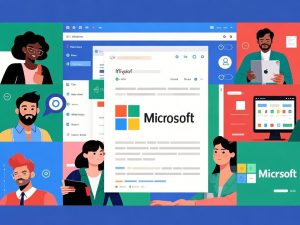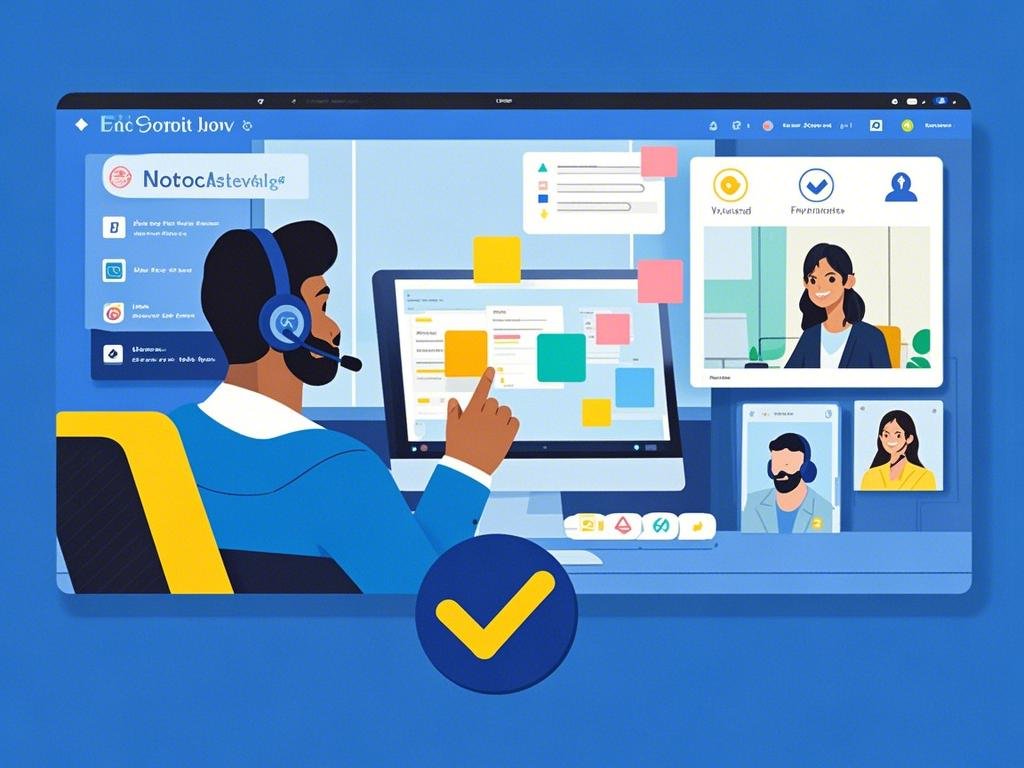Introducción
El future of work has dramatically shifted over the past few years, with remote and hybrid work environments becoming the norm rather than the exception. As businesses adapt to these new working styles, they require solutions that enable seamless communication, collaboration, and productivity from anywhere. Microsoft, a leader in productivity software, has been at the forefront of these changes, continually innovating to meet the needs of remote and hybrid workers.
In this article, we will explore how Microsoft software, incluido Microsoft 365, Equipos de Microsoft, y Ventanas, is evolving to support the changing work landscape. From improved collaboration tools to enhanced security and flexibility, Microsoft is playing a key role in shaping the future of work.

1. Microsoft 365: Empowering Remote Collaboration
Microsoft 365 is a suite of cloud-based productivity tools that have been essential in the transition to remote work. Applications like Palabra, Sobresalir, PowerPoint, Perspectiva, y OneDrive allow teams to collaborate in real time, no matter where they are. Microsoft has added numerous features to these tools to make them even more efficient for remote and hybrid environments.
Key Features for Remote Work:
- Colaboración en tiempo real: Microsoft 365 allows multiple users to work on documents, presentations, and spreadsheets simultaneously. Changes are instantly visible to everyone, making it ideal for teams spread across different locations.
- Almacenamiento en la nube: OneDrive offers cloud storage, ensuring that files are easily accessible and securely backed up, even when working from various devices.
- Integración con Microsoft Teams: With Equipos de Microsoft being integrated into the Microsoft 365 suite, it acts as a hub for communication, collaboration, and project management.
The Role of Microsoft 365 in Hybrid Work:
Hybrid work, where employees split their time between home and the office, requires flexible solutions. Microsoft 365 helps create a connected work experience for team members, regardless of their location. With cloud accessibility and seamless integrations, employees can access all necessary documents and tools without being tied to a specific device or physical office.
2. Microsoft Teams: The Central Hub for Collaboration
Equipos de Microsoft has become one of the most critical tools for remote and hybrid work environments. It is not just a messaging app but an integrated platform that combines chat, video calls, file sharing, and collaboration in one place.
How Teams Supports Remote and Hybrid Work:
- Video Conferencing: Teams provides high-quality video conferencing that can accommodate large teams and facilitate virtual meetings, helping to bridge the gap between in-office and remote workers.
- Integrated Apps: Teams integrates with a wide range of apps, including Microsoft 365 apps, third-party tools, and task management systems, which streamline workflows and make it easier for teams to stay organized and productive.
- Collaboration Features: Teams offers features like shared documents, team channels, direct messaging, and file storage, all of which are accessible regardless of location.
- Virtual Breakrooms and Social Interaction: As remote work can often feel isolating, Microsoft is introducing features like virtual breakrooms and Teams Together Mode, allowing employees to socialize and maintain a sense of team camaraderie.
3. Windows 11: Optimized for Hybrid and Remote Work
Windows 11 was designed with the future of work in mind, offering features and optimizations to enhance the user experience, particularly in remote and hybrid environments.
Key Features for Remote Work on Windows 11:
- Virtual Desktops: Windows 11 allows users to create and manage multiple virtual desktops, helping workers stay organized by separating different tasks and projects.
- Snap Layouts and Snap Groups: These features allow for easier window management, enabling users to arrange open apps side by side for greater productivity, especially on larger screens.
- Microsoft Teams Integration: Teams is built directly into Windows 11, allowing users to instantly start chat or video calls from the taskbar. This feature simplifies communication and collaboration for remote teams.
- Security Features: With features like Windows Hello for facial recognition and BitLocker for disk encryption, Windows 11 ensures that sensitive data remains secure even in remote or hybrid setups.
How Windows 11 Supports Hybrid Work:
Hybrid workers often switch between office and home environments, which means they need a seamless transition between workspaces. Windows 11 provides the flexibility to work across different devices, and its integration with Microsoft 365 y Equipos ensures that workers can easily access their work, regardless of where they are.
4. How Microsoft Is Innovating for the Future of Work
In addition to the tools mentioned above, Microsoft is continually innovating to better serve remote and hybrid workforces. Some key innovations include:
AI and Automation:
- Microsoft is leveraging AI y machine learning to enhance productivity. For example, Editor de Microsoft uses AI to help users improve their writing, while Cortana y Automatizar la potencia streamline workflows through intelligent task management.
Cloud-First Strategy:
- Microsoft’s cloud-first approach ensures that all apps and services are optimized for cloud computing, making it easier for businesses to scale and manage their remote teams effectively.
Security and Compliance:
- Microsoft is investing heavily in security to address the growing need for safe remote work. Tools like Microsoft Defender y Azure Active Directory help ensure that devices and data are secure, while compliance solutions assist businesses in meeting regulatory requirements.
Flexibility with Devices:
- Microsoft’s hardware, such as Surface devices, is designed to complement their software ecosystem, offering ultra-portable devices that are ideal for remote workers. Additionally, Windows 11 optimizes performance across various devices, whether desktops, laptops, or tablets.
Conclusión
El future of work is increasingly hybrid and remote, and Microsoft software is evolving to meet the needs of this new landscape. With the introduction of tools like Equipos de Microsoft, Microsoft 365, and the optimized features in Windows 11, Microsoft is not just keeping up with the trend—it’s shaping it.
For businesses looking to adapt to the future of work, adopting these innovative solutions can enhance collaboration, productivity, and security. Whether you’re working from the office, from home, or a combination of both, Microsoft’s software suite ensures that teams remain connected and productive.







 No products in the cart.
No products in the cart.